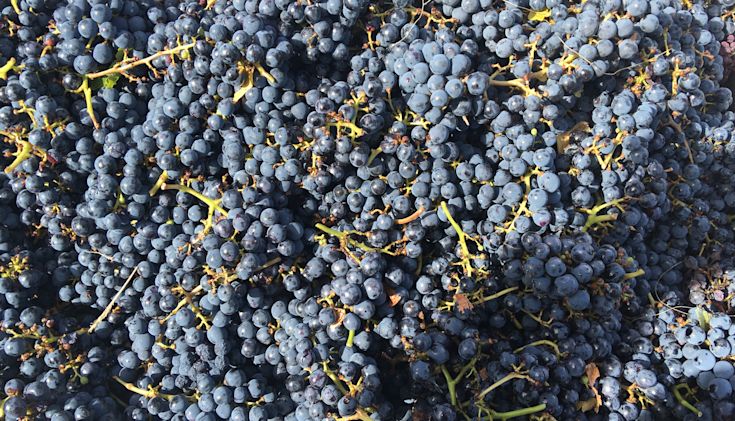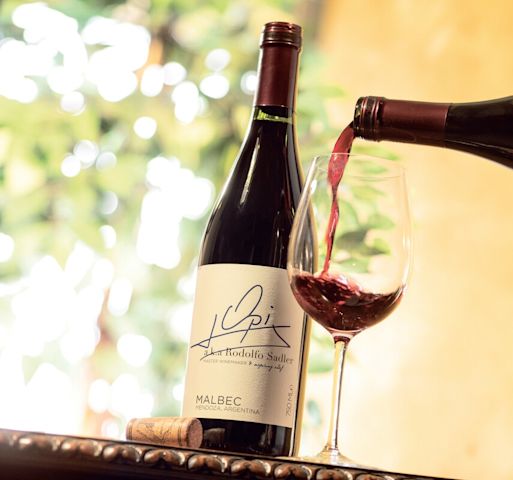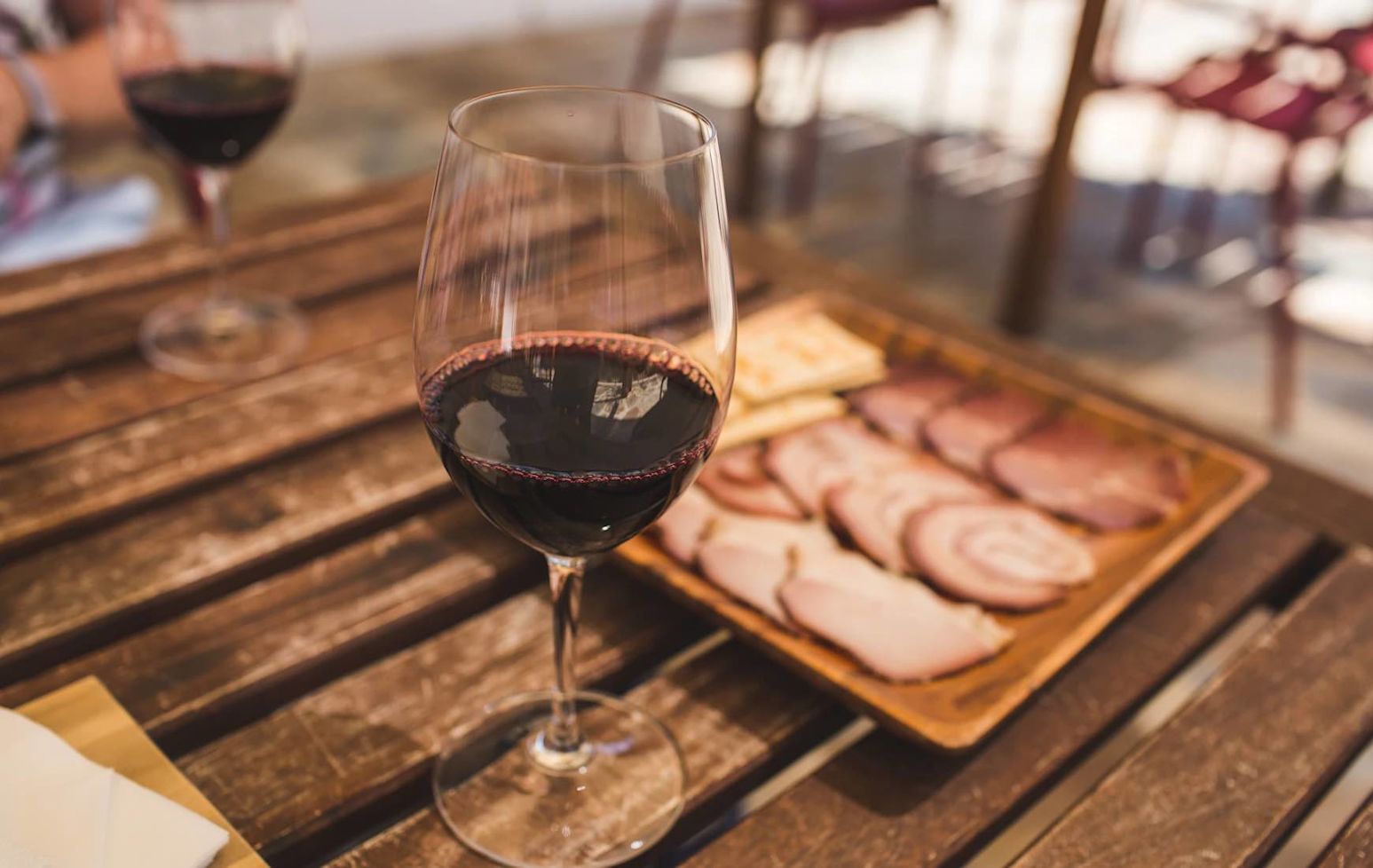Chat with Vinny
Dial M for Malbec – and full-bodied flavour! Everything you need to know about France’s inky dark red, what to drink it with, and how it found richer fame and fortune in Argentina. Read on for more.
If ever a wine loves the high life, it’s Malbec.
As one of the official five red grapes of Bordeaux, its graced the tables of the Russian Tsars and French aristocracy. As the ‘black wine’ of Cahors, it was served in the medieval banqueting halls of Eleanor of Aquitaine. Then hard times hit and sent it packing.
In the mid-19th century, when vine pests and freezing frosts almost wiped it out, Malbec left its homeland in France and headed to South America. Here, it has adapted and prospered in its second and, some would say, best home. Malbec is – literally and figuratively - reaching new heights. Indeed, open a restaurant wine list and you’ll find Malbec almost synonymous with Argentina.
But while Malbec wines have undoubtedly put Argentina on the world’s fine wine map, it also produces deliciously drinkable wine in many other countries. So, let’s discover exactly what Malbec is: where it’s from, what it tastes like, food to pair it with and why you should be drinking more of it!

What is Malbec and why is it so popular?
Over the years, this small, deeply coloured grape has had many names: Auxerrois, Pressac, Doux Noir, Quercy, Plant du Lot and, in Cahors, south-western France, Cot.
But whatever you call them, Malbec grapes are temperamental – being too sensitive to the wet and cold weather of much of France’s wine regions. So, when phylloxera swept across Europe, most growers never replanted Malbec – they opted for more hardy varieties instead. But when Malbec is healthy and ripe, it makes deeply coloured, intensely flavoured and fruit driven red wines. And the key to the popularity of Malbec lies in how easy these red wines are to drink and how well they go with or without food.
What do Malbec wines taste like?
Malbec wines are medium to full bodied in style.
Their moderate acidity and levels of tannin make them a full-flavoured, dry red wine drinking experience. Put simply, Malbec wines are lush and velvety, full of dark fruit flavours and spice.
However, the dramatic difference in taste between Argentinian Malbec and French Malbec shows the extent to which terroir and climate can influence a wine.
What does cool-climate Malbec taste like?
Cooler climate Malbec reds tend to have more youthful energy, with raspberry, red cherry, and white pepper notes. In its traditional French heartland, Malbec grapes produce more medium-bodied wines with softer amounts of fruit flavour.
What does warm-climate Malbec taste like?
Where the weather is warmer and sunnier, the Malbec grapes ripen more thoroughly. So you enjoy more dark fruit flavours and stronger spice and pepper notes. If you like reds made from Syrah, chances are you will love Argentine Malbec.
What are the best regions for Malbec in France?
Bordeaux
Malbec was traditionally used to provide colour and tannin to red wines of Bordeaux – rather than as a main player like Merlot or Cabernet Sauvignon. Even so, it is still possible to find pure Malbec reds in Bordeaux. But you’ll have to look hard. Malbec now represents less than 1% of the total grapes planted in the region.
The ‘black wines’ of Cahors
But for the most interesting and exciting French Malbecs, head 65 miles south-east of Bordeaux to Cahors. This picturesque region around the river Lot is Malbec’s historic heartland. Here the grape is still known as Cot – and it still makes the famously black wine it did hundreds of years ago.
These brooding, dark fruit Malbecs with their black plum, tart currant, and black pepper have earthier notes and much more tannins than their Argentinean counterparts. Perfect if you want a more rustic, savoury red – and perfect for the cheeseboard too.
What are the best regions for Malbec in Argentina?
If you want a Malbec with riper fruit flavours and a more velvety texture than you’ll find in Cahors, head to Argentina. Malbec grows particularly well here thanks to sunny days and cool nights. And in the higher altitudes and warmer climates of Argentina’s mountainous areas, it really thrives.
As Master of Wine and writer Jancis Robinson says: “With its high levels of alcohol and fruit, Argentine Malbec is not difficult to like.”
Malbec from Mendoza
Look for Mendoza on the label, and you won’t go far wrong.
Here, the Andes mountain range cuts through the area to its west, so the grapes cultivated by the wineries in the Mendoza region are sheltered from the hot and humid air of the Pacific. It also receives little in the way of annual rainfall, resulting in the area being known for its hot and dry summers and dry and cold winters. Mendoza is by far the country’s most important wine-producing area, containing around 75% of all Argentinian vineyards. Mendoza Malbecs are fruit-forward reds, dark and plush with black cherry, spicy plum, and blackberry coming through, alongside supporting flavours of chocolate, tobacco smoke, as well as vanilla and leather, if the wines have been aged. Anyone who is anyone in the wine world makes Malbec from Mendoza – from local stars like Opi Sadler (check out his Opi Malbec) to the owners of Bordeaux’s legendary Château Lafite, Domaines Barons de Rothschild – who joined forces with a third-generation Argentinian winemaking family to produce their superb, barrel-matured Caro red.
Malbec from Salta and the Calchaqui Valley
It is also worth checking out any red wines from Salta and the Calchaqui Valley. This fertile wine region in the northwest is home to the highest vineyards on the planet. And the higher you go, the thicker the grape skins. Which means higher tannins. High altitude Malbecs have even greater concentration and structure… yet they are still very soft and round wines.

Malbec from Chile
Argentina's neighbour is now also producing some very successful Malbec. In fact, Chile has quite substantial plantings of old Malbec vines and these can produce some lusciously ripe, dark and characterful wines.
And although Malbec performs best at higher altitudes where it can gain maximum exposure to sunlight, the grape has found a home in a land down under…
Malbec in Australia
Yes, Malbec has found a home in Australia’s more moderate climate regions, particularly in Langhorne Creek and the Clare Valley. In these two South Australian regions, it makes red wines famed for their complex flavour profile and softer tannins.
What are the best food pairings for Malbec?
Wherever your Malbec comes from, it is tailor-made for food…
Naturally, Malbec is a shoo-in for barbecues. The savoury flavours and richness of the grilled meat balance out the tannin of the wine… while fruity, tangy, smoky and spicy BBQ sauces happily match Malbec’s fruity, tangy, smoky, and spicy taste profile. (Sage, rosemary, cumin, pepper, shallot, Cajun spice and cumin spice all work with Malbec).
You can also pair Malbec with lamb and duck dishes, pot roasts, sausages, charcuterie and pulled pork. However, the tannin can be softer than in other reds. Unlike Cabernet Sauvignon, Malbec doesn’t have a super-long finish. Which means Malbec is a great food match for leaner red meats (think venison or ostrich, not just cuts of steak). It also works well with funkier flavours like blue cheese, as well as mushrooms, roasted peppers, potato, eggplant, squashes and sautéed spinach.
Top food pairing tip:
Look to local cuisines when matching your bottle of Malbec with food.
Those from the higher altitudes of Argentina tend to match best with spicy chorizo sausage or cuts of beef or lamb that feature local spices. Australian Malbecs, on the other hand, can be paired with steak sandwiches, roast legs of lamb or even smoked trout.

About the author
Richard Bull
Although good at running up hills, Richard failed to make the military cuvée and turned instead to the drinks trade. After stints at Hennessy, Oddbins and Grants of St James, he arrived at Laithwaites. Here, he spent 15 years writing about real wine and the people who make it. As he wrote from the desk to your door, he was lucky enough to visit vineyards in France, Italy, Spain and Kent - as well as being flown over South Africa's Breede River by a winemaking army veteran who'd just had a heart attack. Qualified to WSET Level 3, he loves the off-the-beaten track reds of the Languedoc, but is currently obsessed with all drops Greek - particularly their super crisp whites.

